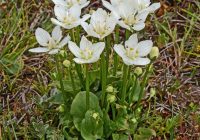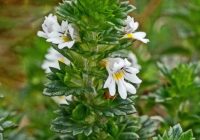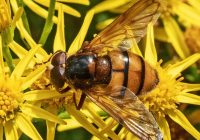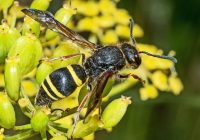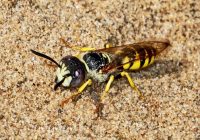Dr Phil Smith’s Wildlife Notes
July 2023
After such prolonged dry conditions, a change to “rain at times” was welcomed by many. The North Atlantic Jet Stream got stuck over Britain, resulting in a relatively wet July. Indeed, according to the Met Office, Lancashire was the wettest county in England with an average of 235 mm of rainfall. Being on the coast, we had much less, though Rachael Parks recorded 157.5 mm in her Formby garden, about 2.5 times the normal amount for July. As well as being hugely beneficial for our wildlife, as the Met. Office pointed out, the rain helped to recover river, reservoir and ground-water levels in much of the country.
Our sand-dune vegetation showed a dramatic improvement during the month. Although grasses had died off on some older dunes, the rain produced a noticeable ‘greening’ overall. The first Grass-of-Parnassus flowered at the Devil’s Hole on 3rd, a prelude to a good showing of this iconic species that was enjoyed by 10 members of the Formby Civic Society during their guided walk on 26th. However, the introduced Traveller’s-joy also grew like mad at Ainsdale/Birkdale dunes. Joyce and David Jarvis joined me for a survey of this invasive plant. We mapped and measured 68 patches covering nearly 0.4 ha (1 acre), with plenty more to come. It was also clear that the plant is spreading rapidly. We hope that this baseline study will provide evidence to support control measures.
The lovely little eyebrights also benefitted from the change in the weather and I was delighted to find several colonies of the elusive but distinctive Western Eyebright at Ainsdale. This attractive flower is largely confined to cliff-tops and sand-dunes and is Red-listed ‘Near Threatened’. I was also pleased to find 45 mature plants of Isle of Man Cabbage at Hightown dunes. These were additional to 30 of this British endemic I counted in June. They originated from seed imported with sand from Crosby in 2011 as part of a coast protection scheme. I joined surveyors from the Local Sites Partnership on 28th to check out the condition of habitats at Cabin Hill National Nature Reserve. Among the 380 higher plants recorded for the reserve is a solitary bush of the incredibly rare Don’s Willow that I first found over 20 years ago. On our way to the willow, I spotted some Purple Moor-grass, a species more usually associated with uplands and peat bogs. Nearby were several plants of Yellow Bartsia,an uncommon denizen of damp pastures, mostly in the west and south. Plant hunting was paused briefly when the distinctive reel of a Grasshopper Warbler started up a few yards away and a Roe Deer suddenly broke cover, giving good views. These deer are increasing all along the coast and may eventually contribute some useful conservation grazing, supplementing domestic livestock and the much reduced Rabbit population.
Following the rain early in the month, Pete Kinsella reported “an uptick in insect numbers.” Thus, on 2nd he photographed a Rot-hole Dronefly, new to the Sefton Coast, at Ainsdale NNR. He also found White-letter and Purple Hairstreaks and a Hummingbird Hawkmoth to add to an impressive list of regulars. I didn’t do quite so well but did record as many as seven Common Stiletto flies, with other choice insects, such as the Lesser Hornet and Great Pied Hoverflies, on the outskirts of Formby. Both Lesser Hornet and Hornet Hoverfly were at Ravenmeols on 3rd, together with three late Ringlets and at least ten of the formerly rare parasitic fly Linnaemya picta that only arrived here in 2020 from the south. Checking flowers of Wild Parsnip at Hightown dunes on 6th produced a smart looking Maritime Mason Wasp –one of the less common solitary wasps and new to me. Another highlight on 9th was three Forester moths at Ainsdale NNR. On 16th, Ravenmeols dunes produced an assortment of ‘good’ flies, including the rare Dark-cheeked Beegrabber and a Waisted Beegrabber on the same Creeping Thistle. I was also delighted to photograph the elusive and flighty Hook-barred Spearhorn, while a patch of Wild Carrot attracted a distinctive Two-banded Spearhorn. As I walked back, a Dune Villa landed on the path in front of me.
During several visits to Freshfield Dune Heath Nature Reserve later in the month, I found a range of insects on Ragwort, which was having a particularly good year. They included Foresters, not seen on the reserve for many years, while several of the imposing Giant Tachina, the largest European member of its family, vied with the tiny Phasia obesa. Found by Pete Kinsella, the latter fly is new to the Sefton Coast. Thanks to Pete, I also managed to get to grips with the Bee Wolf, a spectacular solitary wasp that has only recently reached us as it spreads northwards. Nearby, a colourful Southern Hawker dragonfly was taking a breather on a Gorse bush, while Pete pointed out a Purple Hairstreak high on a young Oak.
Finally, I heard from iRecord that a fly I photographed last October on Wick’s Path and submitted as Eriothrix rufomaculata had been reassigned by an expert to the closely similar Mintho rufiventris, a southern species that is new to the Northwest of England!

